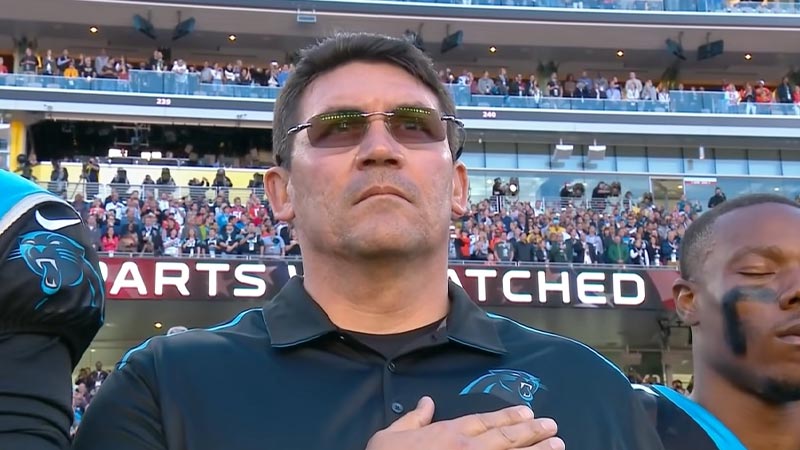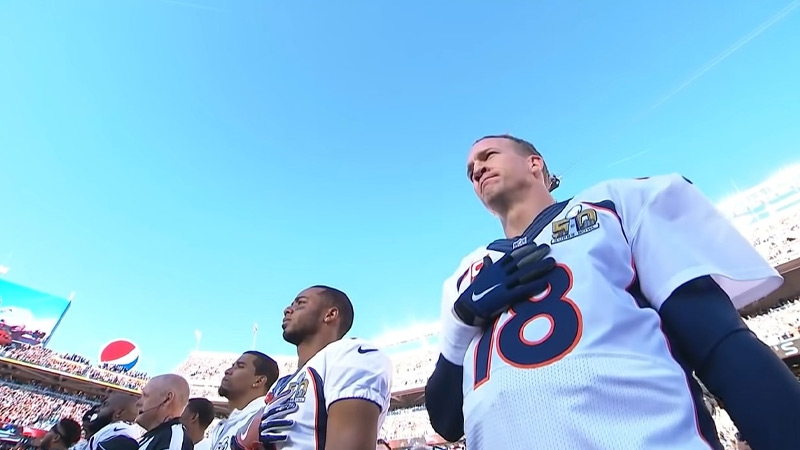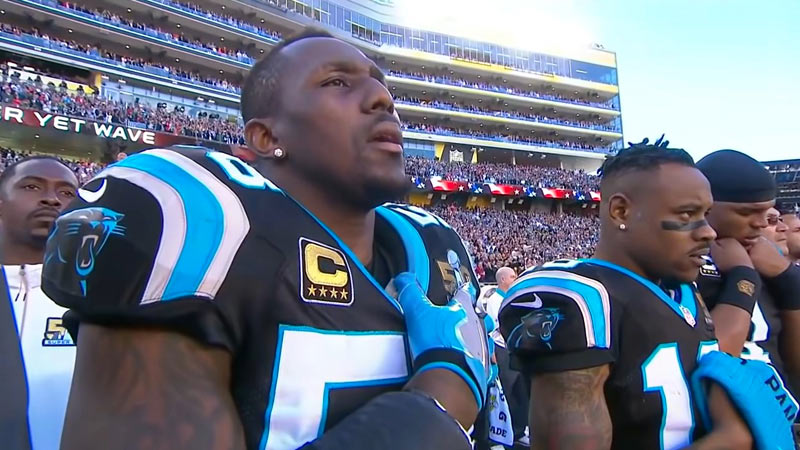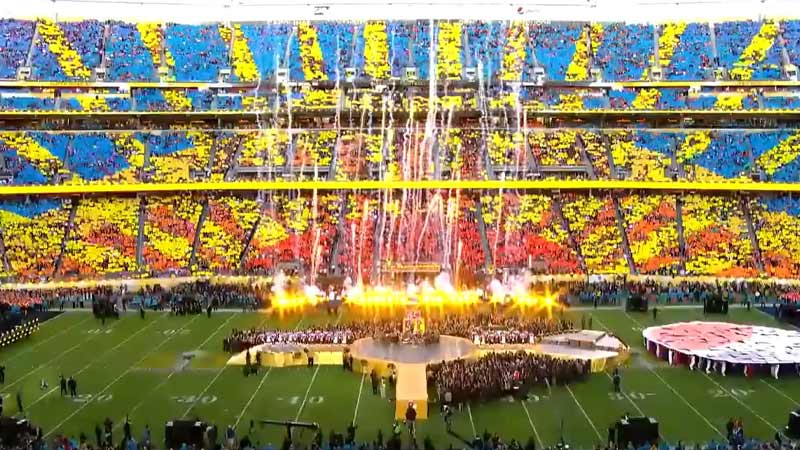The Super Bowl Halftime Show, a spectacle that captivates millions, isn’t just about music and entertainment.
It’s a cultural touchstone that generates as much buzz for its controversies as its performances.
In this blog post, we delve into the dynamics that have made the Super Bowl Halftime Show a consistent source of contention.
From the humble beginnings of marching bands to today’s high-octane extravaganzas, it’s a story of evolution and transformation.
The controversies range from Janet Jackson’s infamous “Nipplegate” incident to artists making bold political and social statements.
As we explore the show’s evolution, we’ll uncover the delicate balance between artistic freedom and family-friendly expectations, the influence of social media on these controversies, and the steps taken to prevent them.
Join us on a journey through the Super Bowl Halftime Show’s history to understand why it continues to be a topic of debate and fascination.
The Evolution of the Superbowl Halftime Show

The Super Bowl Halftime Show has evolved significantly over the years, transforming from a simple, relatively low-key entertainment segment to a massive, star-studded extravaganza.
Here’s a concise look at its evolution:
Early Years (1960s-1980s)
The early Super Bowl Halftime Shows were relatively modest affairs, featuring marching bands, drill teams, and local performers.
The focus was primarily on filling the time between halves of the game rather than offering a headline-worthy performance.
Disney Era (1990s)
In the 1990s, Disney took over the production of the Halftime Show, introducing themes and elements designed to cater to family audiences.
This era saw performances by artists like New Kids on the Block and Michael Jackson, setting the stage for bigger productions in the future.
Pop and Rock Dominance (2000s)
The 2000s marked a shift towards pop and rock acts taking the stage, featuring big-name artists like *NSYNC, Britney Spears, Aerosmith, and U2.
Janet Jackson and Justin Timberlake’s infamous “Nipplegate” incident in 2004 brought significant notoriety to the Halftime Show.
Broadway and Nostalgia (2010s)
The 2010s saw a trend toward nostalgia and Broadway-style productions. Performers like Madonna, Beyoncé, and Bruno Mars combined their star power with elaborate sets and special effects.
These shows often included surprise guest appearances, enhancing their appeal.
Political and Social Statements (2010s-Present)
The Halftime Show has increasingly become a platform for making political and social statements in recent years.
Beyoncé’s performance in 2016 addressed issues of police brutality, and The Weeknd’s 2021 show included elements commenting on consumerism and the pandemic.
Diversity and Inclusivity (2010s-Present)
There has been a growing emphasis on diversity and inclusivity, with more representation of different musical genres and artists from various backgrounds.
Shakira and Jennifer Lopez’s performance in 2020 celebrated Latin culture, and The Weeknd’s show featured a diverse cast of backup performers.
Star-Studded Collaborations (Present)
Modern Super Bowl Halftime Shows often feature multiple A-list artists, making them even more appealing to a broad audience.
The 2020 show, for example, featured Shakira and Jennifer Lopez, while the 2021 performance starred The Weeknd.
Technological Advancements (Present)
Recent shows have taken advantage of cutting-edge technology, creating visually stunning spectacles.
Integrating drones, LED screens, and immersive visual effects have become more common, enhancing the overall production.
The Super Bowl Halftime Show has evolved into a high-profile, global entertainment event, transcending its original purpose of filling time during a football game.
With each passing year, it has grown in scale, significance, and diversity, attracting viewers not only for the football but also for the star-studded performances and memorable moments.
It continues to reflect the evolving tastes and sensibilities of American culture.
Why Is The Super Bowl Halftime Show Controversial?

The Super Bowl Halftime Show is controversial for several reasons, and the controversies surrounding it can vary yearly.
Here are some of the key reasons why the Super Bowl Halftime Show tends to be a subject of controversy:
Large Viewership
The Super Bowl is one of the most-watched television events in the United States, with millions of viewers tuning in. As a result, the Halftime Show receives enormous attention, making any incident or statement during the performance more likely to generate controversy.
Artistic Freedom
The Halftime Show often features high-profile artists who may use the platform to express themselves artistically. This can include provocative performances, politically charged messages, or unconventional visual elements.
While many appreciate this artistic freedom, it can also lead to controversy if the content is deemed inappropriate or polarizing.
Cultural and Political Climate
The Super Bowl takes place in the midst of the cultural and political climate of its time.
When artists use the Halftime Show as an opportunity to address current issues, such as social justice, police brutality, or political statements, it can stir controversy, as these issues often divide public opinion.
Wardrobe Malfunctions
One of the most infamous Super Bowl Halftime Show controversies was the “Nipplegate” incident involving Janet Jackson and Justin Timberlake in 2004.
It drew attention to wardrobe malfunctions and the need for wardrobe checks and rehearsals to avoid such mishaps.
Sponsorship and Commercial Interests
The Super Bowl is a major advertising event, and sponsors and advertisers are sensitive to the content of the Halftime Show. Controversy can arise when advertisers or sponsors feel that the content of the performance doesn’t align with their brand values.
Audience Expectations
The Super Bowl is a family-friendly event, and some viewers have certain expectations regarding the content and appropriateness of the Halftime Show. When these expectations are not met, it can lead to controversy.
Response to Controversy
Sometimes, controversy is intentionally generated as a way to gain attention or make a statement. Artists and performers may strategically use the Halftime Show as a platform to address certain issues or draw attention to their work.
Social Media and Instant Reactions
With the rise of social media, any controversial moment or statement during the Halftime Show can quickly go viral, intensifying the debate and discussion surrounding the performance.
The Super Bowl Halftime Show is a high-stakes, high-profile event that combines entertainment, politics, and cultural sensitivity.
This combination makes it susceptible to controversy, as it touches on many aspects of modern American life, and people have diverse opinions on what is appropriate or entertaining in this context.
Super Bowl Halftime Show Controversy

The Super Bowl Halftime Show is one of the world’s most-watched and highly anticipated musical performances. Over the years, it has been the subject of numerous controversies, ranging from wardrobe malfunctions to political statements.
Let’s discuss some of the most notable Super Bowl Halftime Show controversies in detail:
Janet Jackson and Justin Timberlake (Super Bowl XXXVIII, 2004)
This is arguably the most infamous Super Bowl Halftime Show controversy. During their performance, Justin Timberlake accidentally exposed Janet Jackson’s breast, revealing a nipple shield.
This event, which became known as “Nipplegate,” caused a massive public outcry, leading to widespread discussions about indecency on television.
The Federal Communications Commission (FCC) received numerous complaints, and both CBS and MTV, who produced the show, faced fines and backlash.
M.I.A.’s Middle Finger (Super Bowl XLVI, 2012)
British rapper M.I.A. was a guest during Madonna’s halftime performance. During her verse in the song “Give Me All Your Luvin’,” she extended her middle finger to the camera.
This incident led to the NFL and NBC apologizing for the gesture, ultimately resulting in a legal battle between M.I.A. and the NFL over a $16.6 million lawsuit for damages.
Beyoncé’s “Formation” Performance (Super Bowl 50, 2016)
Beyoncé’s halftime show performance paid tribute to the Black Lives Matter movement and addressed issues of police brutality.
It featured backup dancers dressed as Black Panthers and included the song “Formation,” which some viewed as a powerful statement on racial inequality.
While it received widespread praise from many, it also faced criticism and calls for a boycott from those who believed it was too politically charged.
Lady Gaga’s Dive (Super Bowl LI, 2017)
Lady Gaga’s halftime show included a stunt where she appeared to jump off the stadium roof.
While the dive was pre-recorded, it sparked controversy as some believed it was overly risky, with concerns about the potential impact on her health if something had gone wrong.
Maroon 5’s Halftime Show (Super Bowl LIII, 2019)
The choice of Maroon 5 as the headline act for the 2019 Super Bowl Halftime Show faced criticism, particularly in light of the ongoing controversy over the NFL’s handling of players kneeling during the national anthem to protest racial injustice.
Many artists declined offers to perform in support of Colin Kaepernick. Maroon 5’s performance was seen by some as tone-deaf to the broader issues at hand.
Shakira and Jennifer Lopez’s Performance (Super Bowl LIV, 2020)
While Shakira and Jennifer Lopez’s energetic performance was widely praised, it also generated some controversy due to its perceived sexual content.
Some viewers and conservative groups raised concerns about the appropriateness of certain dance moves and outfits in a family-friendly event.
The Weeknd’s Halftime Show (Super Bowl LV, 2021)
The Weeknd’s performance was notable for its elaborate set and use of facial bandages.
Some viewers found the performance confusing or unsettling, and there were debates about the meaning behind the bandages and the messages he was trying to convey.
The Super Bowl Halftime Show has been a platform for various controversies over the years, ranging from wardrobe malfunctions and political statements to issues of artistic expression and the appropriateness of content in a family-oriented event.
These controversies often spark intense debate and discussion, contributing to the cultural significance of the Super Bowl beyond just the game itself.
Cultural Sensitivity and Criticism Regarding The Super Bowl Controversies

Cultural sensitivity and criticism play a significant role in the controversies surrounding the Super Bowl, particularly the Halftime Show. Here’s an exploration of these aspects:
Representation and Diversity
One recurring source of criticism has been the lack of diversity and representation in Super Bowl Halftime Shows.
Critics argue that the shows have historically favored white and mainstream artists, neglecting the rich tapestry of musical genres and backgrounds in the United States.
Recent years have seen efforts to address this criticism by featuring more diverse artists, such as Shakira and Jennifer Lopez’s Latin-focused performance in 2020.
Cultural Appropriation
Some Super Bowl Halftime Show performances have faced backlash for cultural appropriation, where artists borrow elements from other cultures without proper understanding or respect.
This criticism has been particularly directed at non-minority artists who incorporate elements of minority cultures into their acts, potentially perpetuating stereotypes or misunderstanding the cultural significance.
Political Statements
When artists use the Halftime Show to make political statements, they often receive criticism, especially from those who disagree with the message.
For example, Beyoncé’s performance addressing racial inequality and police brutality in 2016 faced both support and backlash, reflecting the country’s deep political divisions.
Inclusivity and Empowerment
On the other hand, some view the Super Bowl Halftime Show as a platform for inclusivity and empowerment.
Performances celebrating diversity or female empowerment, such as Jennifer Lopez and Shakira’s show, have garnered praise for their positive messages.
Family-Friendly Concerns
The Super Bowl is often considered a family-friendly event, and any content deemed inappropriate for a broad audience may lead to criticism.
The challenge for artists and organizers is to balance the desire for artistic freedom with the expectation of family-friendly entertainment.
Social Media and Public Opinion
Social media plays a significant role in amplifying criticism and debates.
The immediate and widespread reactions on platforms like Twitter and Facebook can quickly shape public opinion and influence the narrative surrounding the Halftime Show.
Sponsor and Advertising Concerns
Sponsors and advertisers closely monitor the Halftime Show content, and controversy can impact their brand image.
This dynamic can lead to self-censorship or negotiated content to align with brand values and public opinion.
Legacy of Past Incidents
Controversial incidents in the Halftime Show’s history, such as “Nipplegate” in 2004, have contributed to an environment of increased scrutiny and caution regarding content.
Artists and organizers often know the potential for backlash, influencing their decisions.
The Super Bowl Halftime Show is a cultural and entertainment spectacle, and it is subject to the same cultural, social, and political dynamics as other forms of media and entertainment.
Cultural sensitivity, representation, and the balance between artistic expression and public expectations are central themes in the criticism and debate surrounding the Halftime Show.
These controversies reflect larger societal discussions about inclusivity, representation, and the role of entertainment in addressing social and political issues.
FAQs
Why is the Super Bowl Halftime Show often controversial?
The Super Bowl Halftime Show is controversial due to its massive viewership, which makes any incident or statement more likely to generate attention.
Additionally, the show’s artistic freedom and its potential for political and social statements can spark debates and criticism.
How has the Halftime Show evolved over the years?
The Super Bowl Halftime Show has transformed from its early days featuring marching bands to a star-studded extravaganza.
It has shifted from being a filler for the game’s halftime to a major entertainment event with diverse musical genres and elaborate performances.
Are there any common themes in Super Bowl Halftime Show controversies?
Yes, common themes include wardrobe malfunctions, political statements, artistic freedom, and the balance between family-friendly content and artistic expression.
These themes often contribute to the controversies surrounding the show.
How does social media impact the Super Bowl Halftime Show’s controversies?
Social media amplifies controversies surrounding the Halftime Show.
Immediate reactions on platforms like Twitter can shape public opinion, intensify debates, and influence the show’s overall reception.
What steps are taken to avoid controversies in the Halftime Show?
Organizers have become more cautious, with pre-show wardrobe checks and rehearsals to prevent wardrobe malfunctions.
Additionally, there is a growing emphasis on representing diversity and inclusivity to minimize potential controversies related to underrepresentation.
Wrapping Up
The Super Bowl Halftime Show has come a long way from its modest beginnings, evolving into a major cultural event with a propensity for controversies.
Despite the debates and criticisms, it remains a powerful platform for artistic expression, entertainment, and even social and political statements.
As it adapts to the changing cultural landscape, one thing is certain – it will remain a subject of fascination and debate, reflecting the times we live in and the complex interplay between art, entertainment, and societal expectations.
The controversies, while sometimes divisive, remind us of the importance of these discussions and the role of entertainment in our society.







